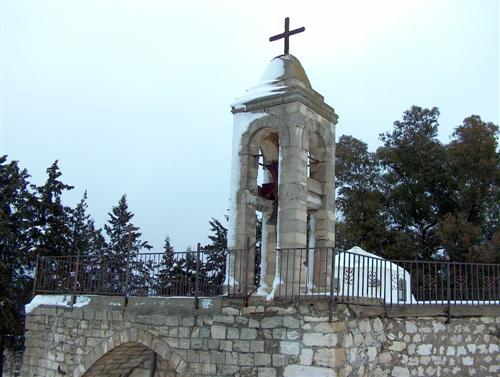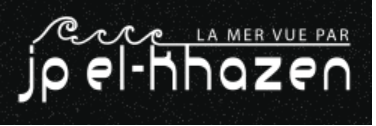
Source: Salk Institute -- Summary: According to researchers, language model AIs like ChatGPT reflect the intelligence and diversity of the user. Such language models adopt the persona of the user and mirror that persona back. The artificial intelligence (AI) language model ChatGPT has captured the world’s attention in recent months. This trained computer chatbot can generate text, answer questions, provide translations, and learn based on the user’s feedback. Large language models like ChatGPT may have many applications in science and business, but how much do these tools understand what we say to them and how do they decide what to say back?
In new paper published in Neural Computation on February 17, 2023, Salk Professor Terrence Sejnowski, author of The Deep Learning Revolution, explores the relationship between the human interviewer and language models to uncover why chatbots respond in particular ways, why those responses vary, and how to improve them in the future. According to Sejnowski, language models reflect the intelligence and diversity of their interviewer. “Language models, like ChatGPT, take on personas. The persona of the interviewer is mirrored back,” says Sejnowski, who is also a distinguished professor at UC San Diego and holder of the Francis Crick Chair at Salk. “For example, when I talk to ChatGPT it seems as though another neuroscientist is talking back to me. It’s fascinating and sparks larger questions about intelligence and what ‘artificial’ truly means.”
In the paper, Sejnowski describes testing the large language models GPT-3 (parent of ChatGPT) and LaMDA to see how they would respond to certain prompts. The famous Turing Test is often fed to chatbots to determine how well they exhibit human intelligence, but Sejnowski wanted to prompt the bots with what he calls a “Reverse Turing Test.” In his test, the chatbot must determine how well the interviewer exhibits human intelligence. Expanding on his notion that chatbots mirror their users, Sejnowski draws a literary comparison: the Mirror of Erised in the first Harry Potter book. The Mirror of Erised reflects the deepest desires of those that look into it, never yielding knowledge or truth, only reflecting what it believes the onlooker wants to see.
by middleeastmonitor.com — The Israeli military were forced to retreat by Lebanese soldiers after violating a border pact over the ‘Blue Line’ …
By Ruiqi Chen, Editor at LinkedIn News — In a culture “obsessed with productivity,” doing absolutely nothing might be the best form …

BY ADAM RASMI/BEIRUT, LEBANON Time.com -- Why Lebanon Is Having a Surprising Solar Power Boom About 2,300 ft. above Beirut in the Matn District mountains, Roger Mazloum and his brother Elias greet me on an unusually balmy winter day as they chop wood to help keep their early 20th century home warm before the cold returns. I’m no match for these burlier Lebanese men, who grew up in Broummana, a town of 15,000 people about a dozen miles east of the Lebanese capital, but I politely take my turn, meekly swinging an ax at the tree stump before us. Despite a lackluster start, and plenty of patience from the pair, something akin to firewood begins to splinter off after a few attempts. Mazloum takes me through the family home’s front door—past a living room with traditional Lebanese floor tiles and artwork dedicated to the late Umm Kulthum, the Egyptian titan of Arabic music—and up the stairs to the roof. The pine-covered mountains and a foggy glimpse of the Mediterranean Sea are a pleasant distraction, but the real purpose of the tour is to see the 18 solar panels slightly obscuring the vista. Like tens of thousands of other Lebanese people, the Mazloums have turned to solar power to generate reliable—and cost-effective—electricity in a country where the crisis-stricken state provides as little as one or two hours of power a day.
“In the past, even when the situation was normal, we used to have five, six, seven hours of power cuts a day,” says Mazloum, as the three of us sip Arabic coffee on their balcony. He is referring to the period before an economic crisis began in 2019 that has seen the Lebanese Lira lose more than 98% of its value against the U.S. dollar. The state-run Electricité du Liban (EDL) has a generation capacity of around 1,800 megawatts, according to Pierre Khoury, the director of the government-affiliated Lebanese Center for Energy Conservation (LCEC), compared to the estimated 2,000 to 3,000 megawatts the country needed before the crisis. But EDL only provides around 200 to 250 megawatts today, because the economic collapse means the government struggles to pay for the imported fuel used to power the country’s two main electricity plants.
Khazen History


Historical Feature:
Churches and Monasteries of the Khazen family

St. Anthony of Padua Church in Ballouneh
Mar Abda Church in Bakaatit Kanaan
Saint Michael Church in Bkaatouta
Saint Therese Church in Qolayaat
Saint Simeon Stylites (مار سمعان العامودي) Church In Ajaltoun
Virgin Mary Church (سيدة المعونات) in Sheilé
Assumption of Mary Church in Ballouneh
1 - The sword of the Maronite Prince
2 - LES KHAZEN CONSULS DE FRANCE
3 - LES MARONITES & LES KHAZEN
4 - LES MAAN & LES KHAZEN
5 - ORIGINE DE LA FAMILLE
Population Movements to Keserwan - The Khazens and The Maans
ما جاء عن الثورة في المقاطعة الكسروانية
ثورة أهالي كسروان على المشايخ الخوازنة وأسبابها
Origins of the "Prince of Maronite" Title
Growing diversity: the Khazin sheiks and the clergy in the first decades of the 18th century
Historical Members:
Barbar Beik El Khazen [English]
Patriach Toubia Kaiss El Khazen(Biography & Life Part1 Part2) (Arabic)
Patriach Youssef Dargham El Khazen (Cont'd)
Cheikh Bishara Jafal El Khazen
Patriarch Youssef Raji El Khazen
The Martyrs Cheikh Philippe & Cheikh Farid El Khazen
Cheikh Nawfal El Khazen (Consul De France)
Cheikh Hossun El Khazen (Consul De France)
Cheikh Abou-Nawfal El Khazen (Consul De France)
Cheikh Francis Abee Nader & his son Yousef
Cheikh Abou-Kanso El Khazen (Consul De France)
Cheikh Abou Nader El Khazen
Cheikh Chafic El Khazen
Cheikh Keserwan El Khazen
Cheikh Serhal El Khazen [English]
Cheikh Rafiq El Khazen [English]
Cheikh Hanna El Khazen
Cheikha Arzi El Khazen
Marie El Khazen